In the treatment of ophthalmic pathologies, the operation in the eye is considered the most effective way.Thanks to modernized medical technologies, eye surgery are performed very quickly.They do not cause practically any damage to the eyeball, but sometimes unexpected complications can occur.Since each operation has its contraindications, the type of surgery is selected individually, depending on the type of disease.To reduce the risks of non -successful results after therapy, doctors recommend performing all the necessary tests.
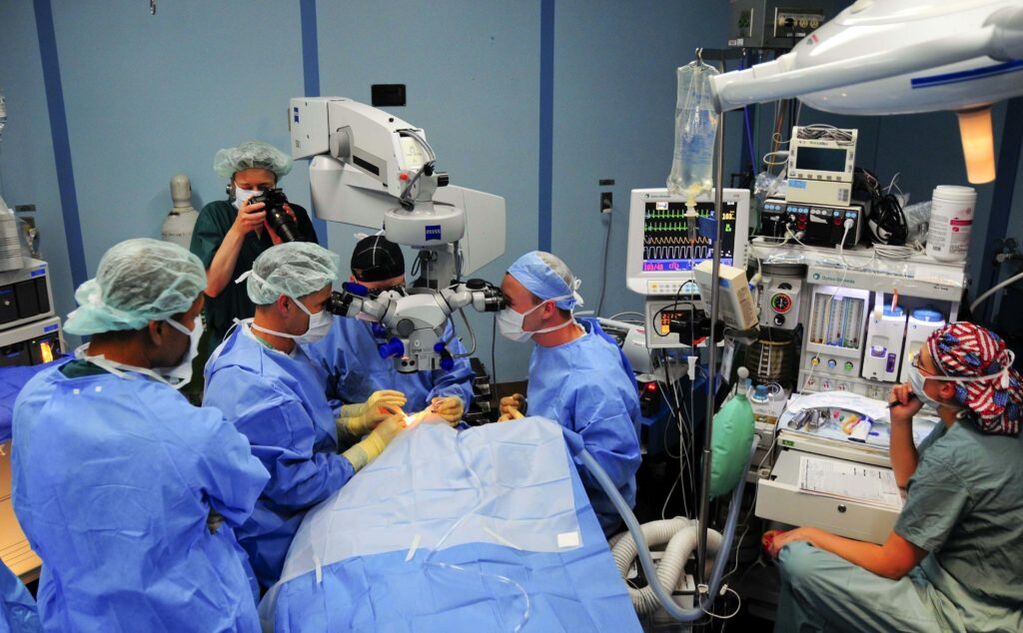
Indications
The procedure is prescribed after an accurate visual inspection and all the necessary diagnostic procedures.Any operation is a risk, therefore, before advising the operation, the doctor will try conservative treatment methods using drug therapy.Surgery is prescribed only if the drugs do not give the desired results.Indications for surgery:
- eye dystrophy;
- Belm formation on the cornea;
- keratocono;
- traumatic damage to the visual organ;
- Cheratoglobus;
- Serious pathological changes in the organ.
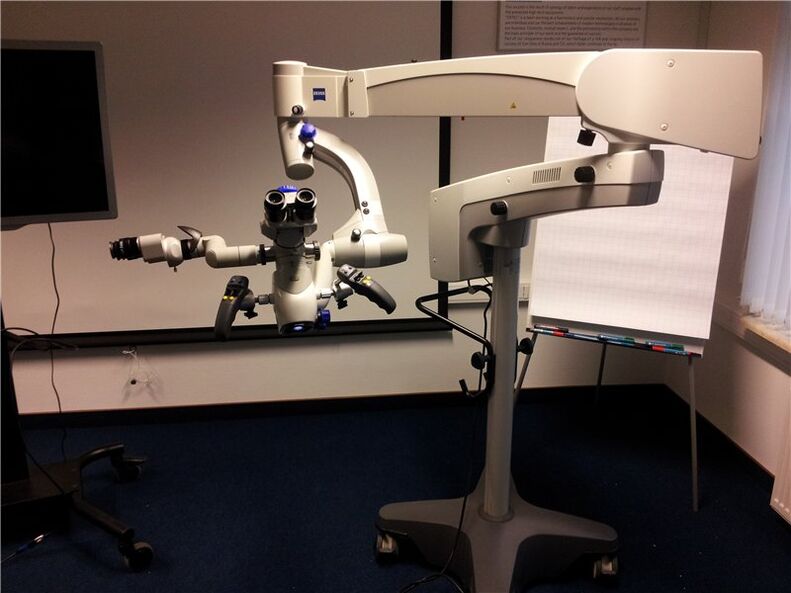
Types and conduct
Before the operation, it is necessary to undergo diagnostics, the doctor will express the list of tests during consultation.The methods of correction of vision are selected individually by each patient, they can be recommended to the patient with cataracts, myopia, strabismo, halazio, glaucoma and other dangerous deviations.During manipulations, ophthalmologists use modern medical equipment, the intervention is carried out using a microscope, the vision is regulated through very small incisions.Since the operation is simple and low, traumatic, long -term hospitalization is not necessary.After 2-3 hours, the doctor explains in detail to the patient all the shades of the recovery period, how to take care of the eye and go home.The hospital is recommended only with serious pathologies (detachment of the retina, serious inflammation, penetrating wounds).There are such types of operations:
- laser surgery;
- Vitrelctomy;
- Trabekulectomy;
- Ltp, lie;
- focusification;
- scleroplasty;
- keratoplasty;
- Eye enucleation;
- refractive replacement of the objective;
- Reticulation;
- Anti -adcomatous operations.
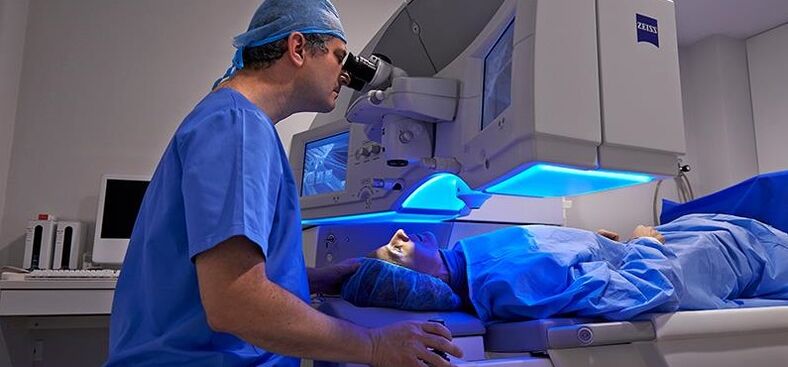
Laser vision correction
Do the operation for the damage and breakage of the retina.Before agreeing, the patient must undergo an in -depth examination.The drops that expand the pupil are dripping before the intervention.With the help of a laser, the eyes are made of microsurgery (the weak areas of the tissues are welded), this prevents the penetration of the fluid and subsequently the detachment.The laser coagulation of the retina is simple, it takes several minutes over time, children also tolerate him well.
The operation takes place under local anesthesia.During the recovery period, the patient is recommended to abandon active sports, bad habits and physical overloads.The negative consequences of the correction of laser vision can manifest themselves within 3 hours - this is a greater secretion of tears, photophobia, redness, discomfort and rubbing in the eyes.Doctors do not recommend this procedure under the age of 18.The percentage of vision restoration after laser correction is very large.
Keratoplasty
With irreversible pathological changes in the eyes, the Okulists recommend this procedure.The operation to restore the vision and the eyes after the accident consists in the complete removal of pathologically altered fabrics of the cornea, which are therefore replaced by the donor.There may be many reasons for surgery: it is Cheratocono, serious damage to the tissues of the eyeball, eed and ulcerative changes caused by fungal infections and genetic predisposition.In surgery, local anesthesia is used.Using the tools, the doctor must remove the sore horny and replace it with a healthy, after which the seams are applied.The weather lasts about 2 hours.The recovery period is 1 year.We recommend the eyes to protect with glasses, this will prevent injuries in the organ, complications after surgery.
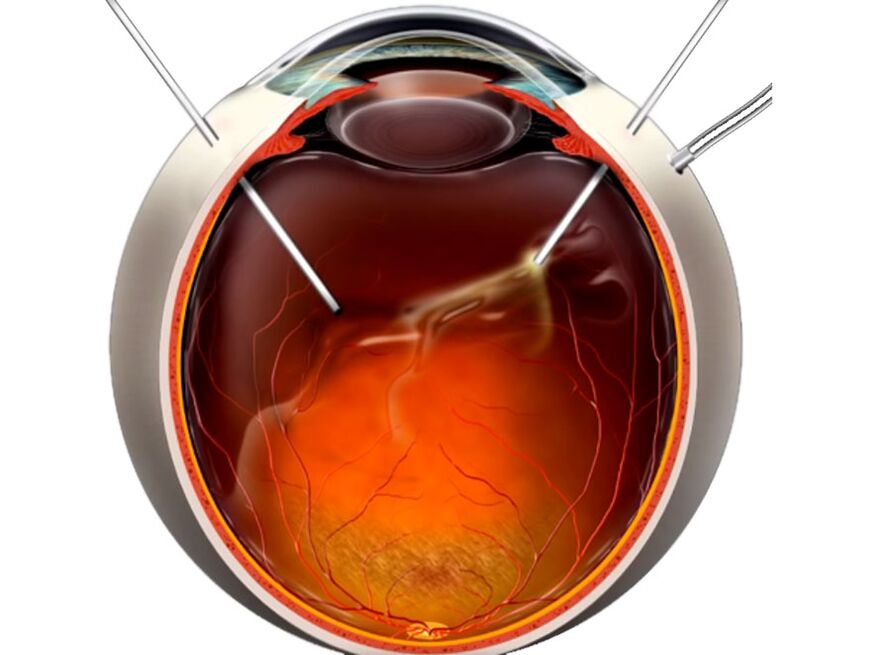
Vitreltomy
Carry out the correction of the vision with pathologically altered vases on the retina and when it is removed.Thanks to manipulations with professionally, the doctor will have access to the rear side of the eye.After removal, the vitreous body is replaced by donor material.A saline solution, silicone oil, polymers and urgent compounds for perfactors are used as a special liquid.In obthetology, vitrelia is considered a micro -vasic methodology, interference in the visual organ system is minimal, this contributes to the patient's return to the patient.With the help of this method, it is possible to restore the structure of the retina, to prevent the development of pathologies, whose names are traction and retinopathy.
Since the air is filled with many particles of dust, in order to prevent the infection after correction of the organ, it is necessary to strictly glue the equity eye with a bandage for some time.
Anti -adcomatous operations
Ocular surgery should be used if drug treatment is not authorizing and only after a complete examination.This type of intervention does not cause pain, is made quickly, usually prescribed for the treatment of closed and open glaucoma and when the vases sprout inside the eyes.The essence of the procedure is to eliminate the fluid accumulated inside the body, it is performed by a laser.The most effective methodology is considered a profound scletectomy not practiced.In the therapy process, the corneal layer interprets surgically, thus reducing the increase in intraocular pressure.The possible consequences of this type operations can be expressed in the formation of scars, at the beginning the eyes can be red.
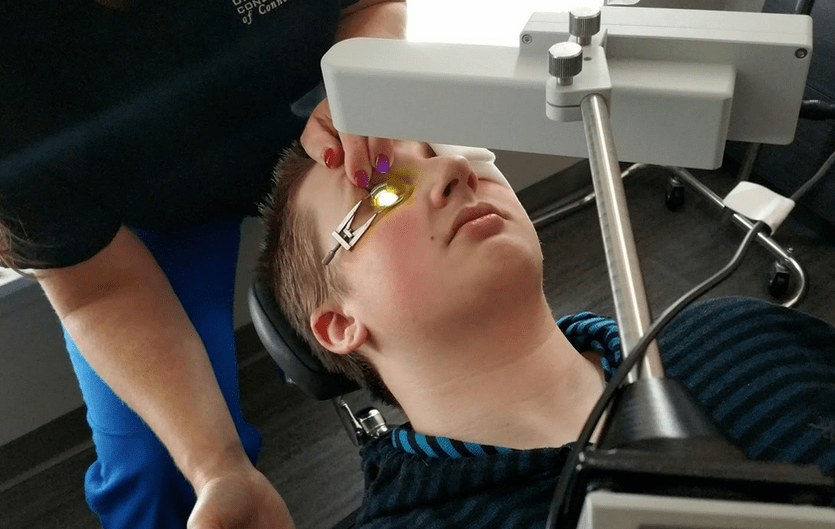
Reticulation
A fairly new method of keratoconus treatment, using it, can prevent the development of the disease in the initial stages.Using a tool whose name is a boring and dripping lamp vitamin B in the eye socket2, it is possible to strengthen the cornea and stabilize the patient's conditions.The advantage of the procedure is that manipulation is performed only once, 1 hour is enough to perform it.After reducing the risks of injury, a special protective lens on the eyeball is put.
Eccoleation of the eye
This is a complex surgical operation, it is prescribed only in extreme cases, if an organ cannot be saved differently.The eyes are completely removed from the eye socket and the fiberglass prosthesis is implanted in its place, it will seem real.When leading, side effects can develop, these are unexpected inflammatory processes and the movement of the system.The testimony includes pathologies such as:
- Glaucoma in a terminal measure;
- the aspect of pain and the development of inflammation in the blind organ;
- Serious wounds and neoplasms.
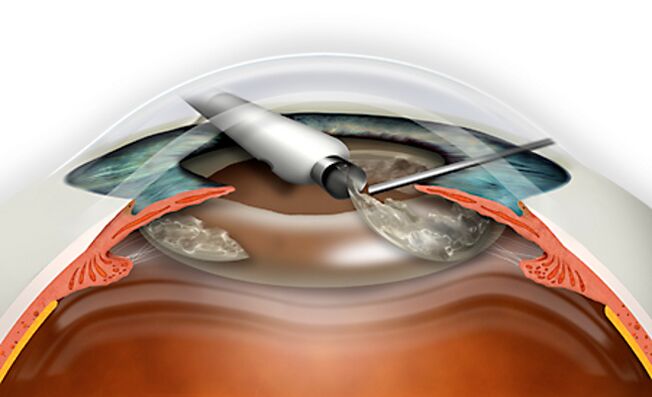
Refractive replacement of the objective
During the surgery, the damaged element of the visual system with an artificial system occurs.When selecting an intraocular lens, the patient's individual characteristics are taken into consideration (age, sex).The procedure lasts 25 minutes, local anesthesia is used, surgical manipulations take place without blood.Through microadnaras, using ultrasound, the goal is transformed into an emulsion and removed from the eye.The replacement of refraction is carried out with pathologies such as:
- Running myopia and hyperopia;
- Presbyopia;
- prohibition on laser correction;
- High -degree hyperopia, which can cause glaucoma;
- Violation of refraction and rapid loss of visual function.
Eximerlazer Vision Correction
Surgical intervention for eye diseases such as strabismo, astigmatism, foresight is recommended.There are several ways to make, this is a Femo Lasik, the federal republic of the criminal code, Lasik.The doctor cuts the upper layer of the cornea, his curvature is modified using a cold ray of an excessive laser, it is better to use local anesthesia and a mediocre.After a correction of eximerlazer, the patient gets rid of the problem, since the procedure is effective by 99%, in the advantage in the face of other interventions.A successful operation leads to the hyper -urrection, causes redness and the corneal layer seems inflamed.
Correction of strabismo
Ocular surgery for strabismo aims to correct the symmetrical position of the organ.The surgery is divided into two types: this is an increase in the muscles that are responsible for the movement of the visual organ and relief in the eye muscle.In the first case, a part of the muscle system, as well as anti -exposure and keeping, is reset, in the second that change the place of muscle fixing, lengthen it from plasticity.To which method to contact, the surgeon decides, given the individual factors and the degree of severity of the pathology.
Scleroplasty
Doctors recommend referring to this type of intervention with uncontrolled development of myopia.Using the methodology, strengthens and stabilizes the patient's conditions, stop the loss of vision.Scleroplasty is shown to children and adolescents at the age of 17 during the period of active growth, with these eye diseases as in rapid development of myopia.
After removing the eye in the first few days, the patient can feel serious pain, in this case, it is necessary to consult the doctor and choose the right analgesics.
Removal of formations
The surgery of this type is indicated for Halazio, cystic neoplasms of conjunctiva and ptergium.Keeping growth with tweezers, the doctor further cuts it to eliminate the negative consequences, the wound is cauterized.To prevent infection, an antibiotic ointment on the eyelids is applied and a sterile bandage is used.The disadvantage is that the disease can develop again, in this case, return to this method of therapy cannot be avoided.
Removal of cataract
During the microchirurgia, a pathologically modified lens is removed, the therapy is performed using the laser and the ultrasonic axemulsification.Special surgical tools through the micronades are thinned and removed by the eye, replaced with artificial.Sometimes they perform a procedure called intracapsular and extracapsycho extraction.





















